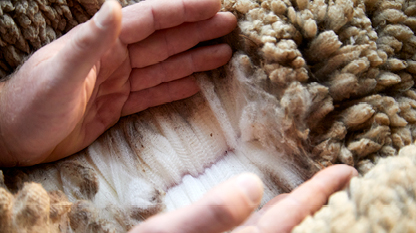The presence of lice causes damage to the wool fleece. The excessive rubbing results in breaks in the fibre, and causes the wool to yellow in colour, and become cotted and therefore reducing the overall quality of the wool. Studies have also demonstrated that where lice are active, reduced wool yield also occurs, with reductions of up to 1kg per fleece. Wool processors report that lice infested wool can have increased losses during processing resulting in reduced top yields. In the current economic environment with wool prices being high, it has become even more important for wool producers to manage lice effectively.
References:
James, P.J., Bartholomaeus, F.W. and Karlsson, L.J.E. (2007). Temporal relationship between infestation with lice (Bovicola ovis Schrank) and the development of pruritic behaviour and fleece derangement in sheep. Veterinary Parasitology 149, 251-257.
LiceBoss Website, “Biology of lice” and “Economic effects of lice”, http://www.liceboss.com.au/, accessed 23/07/2019.
Niven, D.R. and Pritchard, D.A. (1985). Effects of control of the sheep body louse (Damalinia ovis) on wool production and quality. Australian Journal of Experimental Agriculture 25, 27-31.
Wilkinson, F.C., de Chaneet, G.C. and Beetson, B.R. (1982). Growth of populations of lice, Damalinia ovis, on sheep and their effects on production and processing performance of wool. Veterinary Parasitology 9, 243-252.

